
John Vachon Window in home of unemployed steelworker, Ambridge, PA 1941

Today is the first day of the Lunar New Year. 450 million Chinese plan to travel to see family. 41 million are now under lockdown. 850 cases of “coronavirus” have been confirmed. 26 people have died, the elderly and vulnerable. But there are many reports of actual numbers being much higher.
Only 23.8% of Chinese doctors have a bachelor degree or higher. There are 60,000 licensed general practitioners in a country of 1.3 billion people.
Meanwhile, the Chinese “eat everything on four legs except for the table”.
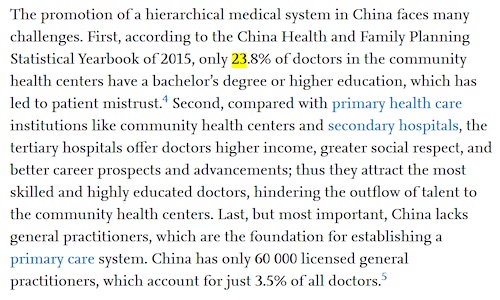

“..the race to build a new 1,000-bed hospital in just six days began on Thursday night..”
• Chinese Hospitals In Chaos As Lockdown Spreads To Affect 33m People (G.)
Hospitals in the Chinese city of Wuhan have been thrown into chaos and the movement of about 33 million people has been restricted by an unprecedented and indefinite lockdown imposed to halt the spread of the deadly new coronavirus. At least ten cities in central Hubei province have been shut down in an effort to stop the virus, which by Friday had killed 26 people across China and affected more than 800. The World Health Organisation described the outbreak as an emergency for China, but stopped short of declaring it to be a public health emergency of international concern.
In the city of Wuhan, where most cases have occurred, the race to build a new 1,000-bed hospital in just six days began on Thursday night. Diggers and bulldozers beginning work on the site of a holiday complex once intended for local workers, according to Chinese media. The hospital, which is due to open next week, is similar to those established in Beijing in 2003, when the city faced a Sars outbreak that killed almost 800 people and reached nearly 30 countries. During that crisis, 7,000 workers in Beijing built the Xiaotangshan hospital in its northern suburbs in just a week. Within two months, it treated one-seventh of all the country’s Sars patients, the Changjiang Daily said.
“It created a miracle in the history of medical science,” the paper added. It said the new Wuhan hospital “is to solve the shortage of existing medical resources”. People who sought treatment in Wuhan this week told the Guardian they had been turned away from hospitals, which have been inundated with patients. Facilities are reportedly running out of beds and diagnostic kits for patients who present with fever-like symptoms. [..] A series of additional measures were announced on Friday to prevent the spread of the virus, including a call from The People’s Daily, the Chinese Communist party’s main newspaper, for people who have recently been to Wuhan to isolate themselves at home, even if they don’t have symptoms. The cities of Wuhan, Ezhou, Huanggang, Chibi, Qianjiang, Zhijiang, Jingmen and Xiantao have all been placed under lockdown.


It’s advanced up to a point where it can no longer be ignored. That’s China for you.
• Four ‘Generations’ Of Spread Seen With Virus In China (STAT)
Emerging data on the new virus circulating in China adds to evidence there is sustained human-to-human transmission in the city of Wuhan, and that a single case was able to ignite a chain of other infections. The World Health Organization reported Thursday that there have been at least four generations of spread of the new virus, provisionally called 2019-nCoV, meaning a person who contracted the virus from a non-human source — presumably an animal — has infected a person, who infected another person, who then infected another person. It’s not clear from a WHO statement whether transmission petered out after that point, or whether further generations of cases from those chains are still to come.
The WHO said the current estimate of the reproductive rate of the virus — the number of people, on average, that each infected person infects — is between 1.4 and 2.5. To stop an outbreak, the reproduction number has to be brought below one. “That gives me no comfort at all that anything that’s happening right now is going to bring this under control any time soon,” Michael Osterholm, director of the University of Minnesota’s Center for Infectious Disease Research and Policy, said of the data the WHO released. “And I think that as long as the virus is circulating in China as it appears to be, the rest of the world is going to be constantly pinged with it, as a result of people traveling to and from China in the near future,” he said.
To date, nine other countries, including the United States, have diagnosed cases of this new illness in tourists who traveled to Wuhan or residents who returned from there. Dr. Allison McGeer, who has firsthand experience with outbreaks caused by coronaviruses — the family to which 2019-nCoV belongs — also expressed concern about prospects for containing the outbreak. McGeer, a researcher at the Mount Sinai Hospital in Toronto, noted that the city’s SARS outbreak took off when fourth-generation cases were infected in the city’s hospitals. McGeer contracted SARS during that outbreak.
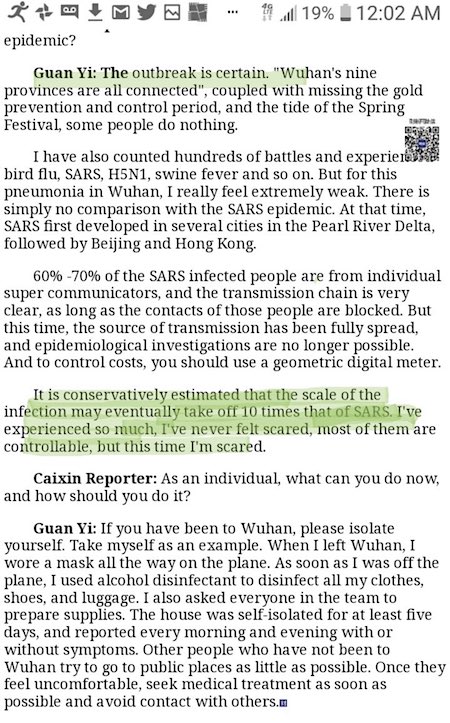

No place in the hospital.
• Cases of China’s Viral Pneumonia Surge Exponentially (ET)
It started with a light cough. He burped constantly, and complained of shortness of breath. Family members thought it was no big deal. The doctor said he seemed to have heart problems and suggested him to stay in the hospital. He appeared healthy except for a minor infection in one lung area. Two weeks later, he was dead, with both lungs infected and organ failure. His doctors at the Wuhan Jinyintan Hospital determined the cause of death as “unknown pneumonia.” It was days before Chinese health authorities identified the cause of the new viral pneumonia as 2019-nCoV, a coronavirus that first emerged in December in the commercial city of Wuhan, his home city.
As of press time, the virus has since sickened more than 540 people across China and around the world, with confirmed cases in South Korea, Macau, Hong Kong, Taiwan, Thailand, and the United States. Much remains unclear about the virus that has sparked fear around the world and cast a cloud over the upcoming Lunar New Year festivities, a major traditional holiday when millions of Chinese travel to their hometowns or go on vacations abroad. Experts say the mass movement of people could accelerate the disease’s spread. The virus has already spread across the country to 17 provinces and regions.
To the man’s family, his death is far from the end of their sorrows. Among his relatives, five have fallen ill: one is under emergency rescue at a Wuhan hospital; his niece and nephew-in-law also have lung infections but doctors turned them away, saying there’s no space for them at the hospital; two others are also experiencing pneumonia-like symptoms. Buying one dose of medicine means waiting for hours in line. His sister, currently in Norway, told The Epoch Times that she was being “silenced” by Chinese authorities and not allowed to post anything about his death. The man is not listed on the authorities’ official death toll, because he did not show any signs of fever, his sister said. She has requested anonymity for fear of reprisal.
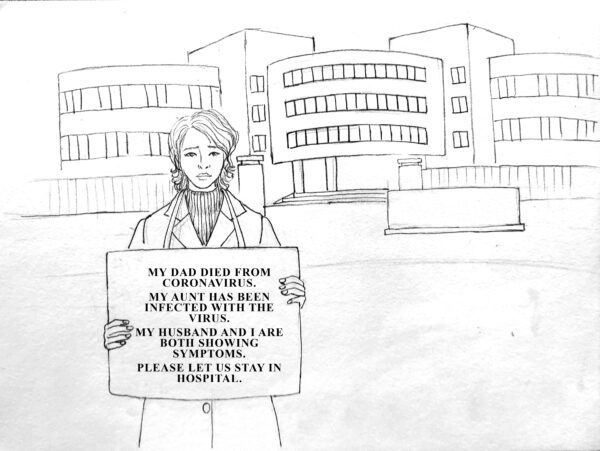

Never let a good crisis go to waste. Surveillance is good for you!
• Wuhan Virus Will Shape China’s Smart City Vision (R.)
An epidemic will shape China’s vision of intelligent cities. The metropolis of Wuhan, with a population of 11 million, is under unprecedented quarantine as a deadly virus, believed to have originated there, spreads around the world ahead of the Lunar New Year when hundreds of millions of Chinese travel. Big investments in healthcare, artificial intelligence, and even surveillance could help curb future pandemics and cushion some institutional weaknesses. [..] The future may be less grim: President Xi Jinping has pushed to upgrade the country’s rickety healthcare system, enlisting technology giants including $474 billion Tencent and insurance group Ping An.
A unit of the latter has partnered with local governments in Shenzhen and Chongqing to develop an algorithm it claims can predict the transmission of influenza and other infectious diseases with 90%-plus accuracy. Elsewhere, the likes of $50 billion video-surveillance specialist, Hikvision, are helping Beijing develop high-tech, digitally-connected urban areas. More than 500 so-called smart cities are already being built across China, according to government figures, equipped with sensors, cameras, and other gadgets that can crunch data on everything from traffic and pollution, to public health and security.
That market could top 103 billion yuan ($15 billion) in revenue by 2023, according to research commissioned by facial-recognition startup Megvii. Until now the push has focused on automating political surveillance, including ugly applications in restive ethnic minority regions like Xinjiang, with little regard to human rights or privacy concerns. But there’s a potential public good if the tech can be re-deployed to detect unusual numbers of feverish people in train stations, for example, while simultaneously cross-referencing healthcare history, travel records and weather patterns. After Wuhan, the pressure to deliver health security, not just political security, will be higher.

Meat for sale in China (without the bats used for soup):

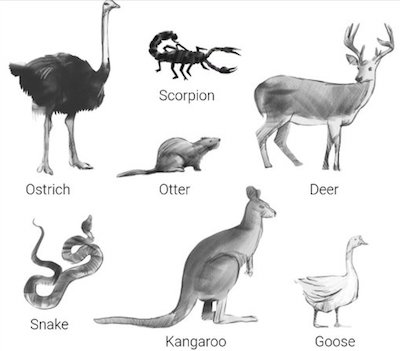


Doesn’t feel like that for me.
• Doomsday Clock Moves Within 100 Seconds Of Midnight (NPR)
In 1953, months after the U.S. tested its first hydrogen bomb and as the Soviet Union was about to do the same, the Doomsday Clock was also set within two minutes of midnight. The minute hand was moved back gradually as nuclear arms control agreements reduced the threat of global catastrophe. By the time the Soviet Union collapsed and the Cold War ended in 1991, the clock was set at an unprecedented 17 minutes to midnight. It has moved closer ever since. “What you’re hearing,” said former California Democratic Gov. Jerry Brown, who appeared at the event as the Bulletin’s new executive chairman, “is really the voices of the prophets of doom. Speaking of danger and destruction is never very easy — if you speak the truth, people will not want to listen, because it’s too awful and it makes you sound like a crackpot.”
The clock’s minute hand was moved forward after the August 2019 collapse of the 1987 Intermediate-Range Nuclear Forces Treaty between the U.S. and Russia. The demise of the pact frees both nations to deploy land-based missiles over ranges that leave little time for a response. There were also growing signs in 2019 that the Trump administration was aiming to withdraw from the Open Skies Treaty, which allows the U.S. and Russia to observe one another’s military installations through closely monitored overflights. And Iran increased its stockpile of low-enriched uranium and added new and improved centrifuges last year in the aftermath of the U.S. withdrawing from a multination nuclear pact with Iran that was forged during the Obama administration.
“I have to admit [that] we set the clock in November,” said George Washington University research professor Sharon Squassoni. “This was before recent military actions by the U.S. and Iran, Iran’s statement or threat that it might leave the Nuclear Non-Proliferation Treaty, and North Korea’s abandonment of talks with the United States.” A growing number of disasters linked to global climate change resulting from the continued consumption of fossil fuels was another factor cited for moving the clock even closer to midnight. “We’re in it, it’s dire, but we’re not there yet,” said Brown. “We can still pull back from the brink, but we have to do what we’re not doing. Whatever we’ve done to date, it is totally inadequate.”

Close to thought crime.
• The House Impeachment Case Vs The Law of Attempts (Turley)
With the start of the impeachment trial, the Senate (and the country) will soon be faced with what the late Yale professor Arthur Leff described as one of the law’s most “lovely, knotty problems.” Leff was speaking of what is loosely called “the law of attempts,” a category of crimes where someone is accused of contemplating, but not actually carrying out, an unlawful act. The Trump trial could be the first time the Senate considers charges that amount to allegedly conceiving, but then abandoning, an abuse of power. While it is certainly true that there was a temporary act of “nonfeasance” in withholding the aid to Ukraine, it was ultimately released over two weeks before the deadline under federal law.
The Trump administration will argue that there was no quid pro quo between the president of the United States and the president of Ukraine; that the military aid to Kyiv, though authorized by Congress, was never withheld; and that the White House always intended to release the aid by the end of September. (It was released on Sept. 11, two days after a whistleblower complaint about the alleged bargain sparked congressional inquiries and, according to critics, was the reason that Trump decided to release the aid.) The question for the Senate is whether an attempt to cut the deal qualifies as a high crime or misdemeanor. The law of attempts has long been debated, and has often favored defendants in securing lesser punishments or outright acquittals.
When, in 1879, an Alaska man sent an order for 100 gallons of whiskey from California, he was charged with illegally attempting to “introduce spirituous liquors” into Alaska. A court dismissed the charge, writing, “There are a class of acts which may be fairly said to be done in pursuance of or in combination with an intent to commit a crime, but are not, in a legal sense, a part of it, and therefore do not, with such intent, constitute an indictable attempt.” That helps explain why such attempted crimes are generally punished less severely. The California Penal Code Section 664 stipulates, for example, that most attempted offenses are punishable, at most, at a level half that for a completed offense. Of course, the Senate cannot “half-remove” a president. But one of the more knotty problems facing the Senate is whether a president can be saved by what Leff called the “luck” of an alleged plan that never actually played out.

Can be restarted in a heartbeat. By killing the markets, the Fed has made itself a prisoner.
• Fed’s Repos Drop to Oct Level, T-Bills Surge, But MBS Fall (WS)
The Fed had doused the market with $410 billion in liquidity between September and January 1 through its repo operations and its T-bill purchases. Market hype had expected this blistering pace of money-printing to continue, but wait… While T-bill purchases continue, the repos on the Fed’s balance sheet are getting unwound, its mortgage-backed securities (MBS) continue to fall, and total assets on its balance sheet fell to the lowest level since mid-December. Under these repurchase agreements, the Fed offers to buy Treasury securities, MBS, and agency securities from counterparties with an agreement to sell those securities back to the counterparties at a set price on a specific date, such as the next day (overnight repos) or in 14 days or some other period (term repos).
When a repurchase agreement matures, the Fed takes back the money it had handed out and returns the securities to the counterparties. This zeros out that particular repo on the Fed’s balance sheet. When the Fed buys securities under a repurchase agreement, the amount it pays adds liquidity to the market. When that repo unwinds, and the Fed gets its cash back and returns the securities, it drains this liquidity from the market. Every day, old repos unwind. And every day, the Fed offers new repos. This is a constant in-and-out. The balance changes every day, but it has been on an uneven decline since the peak on January 1.
The total amount of repos on the Fed’s weekly balance sheet as of January 22, released this afternoon, has now fallen by $70 billion from the peak on January 1 ($256 billion), to $186 billion. This is below where it had first been on October 16. The $43-billion drop in repos over the past seven days was largely due to a 32-day $50-billion repo, dating from December 16, that unwound on January 17. It was not replaced by another 30-day repo, and there are no more 30-day repos on the Fed’s repo schedule or balance sheet.
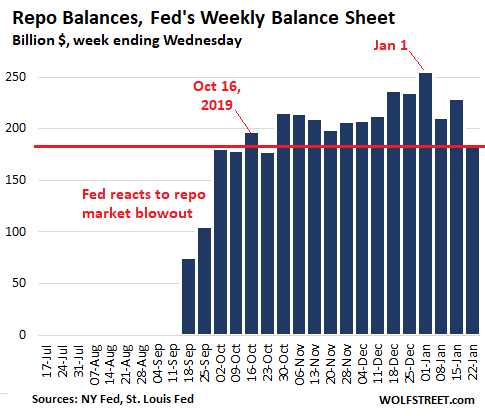

Erdogan wants to redo the 1923 Lausanne Treaty. He has little to lose, and much to gain domestically. But he has Putin against him.
• Turkey Demands Greece “Demilitarize” 16 Aegean Islands (ZH)
At a moment tensions are soaring over Turkey’s expansive East Mediterranean claims, and after starting early last summer it began sending oil and gas exploration and drilling ships off Cyprus’ coast, Ankara is demanding that Greece “demilitarize” its islands in the Aegean Sea, reports Bloomberg. The demand from Turkish Defense Minister Hulusi Akar, who formally requested Greece move to withdraw armed forces and weaponry from 16 Aegean islands near Turkey on Wednesday, is rich given it’s Turkey that’s been provocatively sending warships and military jets to accompany illegal gas drilling in the area, something lately condemned by the EU.
“Greece, arming 16 out of 23 islands with non-military status, in violation of agreements in the Aegean sea, should act in accordance with international law,” said Defense Minister Akar, cited in state-run Anadolu Agency. “We expect Greece to act in line with international law and the agreements it has signed,” he added. Though becoming increasingly internationally isolated over the drilling issue in EU-member Cyrpus’ Exclusive Economic Zone (EEZ), Turkey has remained unmoved and at times is positively boastful about it.
Not shying away from admitting Turkish maritime claims now stretch from Cypriot waters all the way to Libya (based on a controversial recent maritime boundary ‘deal’ signed with the Tripoli Government of National Accord), Akar further had this to say according to state media: In addition to the fight against terrorism, Turkey’s activities are ongoing in the Aegean, Eastern Mediterranean, off Cyprus, and Libya, Akar said, adding that they are carried out in accordance with international law and the territorial integrity of the countries. Turkey is a guarantor country for the Turkish Republic of Northern Cyprus (TRNC) and is committed to fulfilling its responsibilities, he said.

Let’s see a few countries apply this to Americans.
• Assange May Not Get First Amendment Protection (AAP)
Julian Assange faces the prospect of being denied press protections under US law if he goes to trial there, WikiLeaks says, citing evidence submitted for his London extradition case. The 48-year-old WikiLeaks founder is set to face trial in the UK next month to determine whether he should be extradited to the US, where he has been charged with 17 counts of spying and one count of conspiracy to commit computer intrusion. The charges related to allegations Assange tried to help former US army intelligence analyst Chelsea Manning protect her digital identity as she accessed classified Pentagon files on the Iraq and Afghanistan wars. WikiLeaks helped publish thousands of those files, including some that revealed US war crimes in both countries.
His case is widely viewed as a litmus test for the protection of journalists’ sources. WikiLeaks editor Kristinn Hrafnsson says a new affidavit provided by US government lawyers this week for Assange’s upcoming extradition trial states that foreign nationals, like Assange, are not entitled to press protections under the US Constitution’s First Amendment. Mr Hrafnsson revealed the development outside Assange’s case management hearing at London’s Westminster Magistrates Court on Thursday. “On the one hand they have decided that they can go after journalists wherever they are residing in the world, they have universal jurisdiction, and demand extradition like they are doing by trying to get an Australian national from the UK for publishing that took place outside US borders,” he told AAP.
“But then at the same time they are not granting any foreign journalist the protection of the First Amendment. “That’s extremely serious. That’s of grave concern to all journalists. “We are seeing this incremental approach, a darkness flowing over journalism from that country, and it’s about time that journalists really united in resisting this.” Assange appeared by video link from prison at Thursday’s hearing, and did not speak except to say his name and birthdate for the court. Judge Vanessa Baraitser reluctantly agreed to split his trial into two segments with the first week to begin on February 24 and the final three weeks to be held from May 18.
Her ruling came after prosecutors flagged timetabling issues and the defence pleaded for more time to deal with an ever-expanding pile of evidence coming from the US. Mr Hrafnsson says the delay may give Assange and his legal team more time to review mounting evidence, as they have only been permitted four hours together since his arrest on April 11. But he admitted it would also further extend Assange’s time behind bars. “A maximum security prison for a non-violent person like Julian, who is a free man basically, who is on remand, is outrageous,” Mr Hrafnsson told AAP. “It’s totally unacceptable.”
WikiLeaks' Kristinn Hrafnsson: "We have now learned that the United States do not consider foreign nationals to have a first amendment protection…they have decided they have extra-territorial reach… This is extremely serious and of grave concern to all journalists" pic.twitter.com/Gk69G1wNsc
— WikiLeaks (@wikileaks) January 24, 2020

Commemorations vs political games.
• Go to Gaza and Cry ‘Never Again’ (Haaretz)
It’s very important to remember the past; no less important is to be cognizant of the present without shutting one’s eyes. The dozens of statesmen who arrived in Israel yesterday may remember the past, but they’re blurring the present. In their silence, in their disregard of reality while lining up unconditionally alongside Israel, they not only betray their roles, they also betray the memory of the past in the name of which they came here. To be the guests of Israel without mentioning its crimes; to commemorate the Holocaust while ignoring its lessons; to visit Jerusalem without traveling to the Gaza ghetto on International Holocaust Remembrance Day – one can barely think of any greater hypocrisy.
It’s good that kings, presidents and other notables came here in honor of this remembrance day. It’s deplorable that they’re ignoring what the victims of the Holocaust are inflicting on another nation. The city of Yerevan will never witness such an impressive gathering to commemorate the Armenian holocaust. World leaders will never come to Kigali to mark the genocide that happened in Rwanda. The Holocaust was indeed the greatest crime ever against humanity, but it was not the only one. But Jews and the state of Israel know well how to sanctify its memory as well as using it for their own purposes.
On this International Holocaust Remembrance Day, world leaders are the guests of an Israeli prime minister who, on the eve of their visit, called for sanctions – believe it or not – on the International Criminal Court in The Hague, which is a legacy of the courts that were set up to judge the crimes of World War II. On this Remembrance Day, world leaders are coming to a prime minister who is trying to incite them against the court in The Hague. It’s hard to think of a more galling use of the Holocaust, it’s hard to conceive of a bigger betrayal of its memory than the attempt to undermine the court in The Hague only because it wishes to fulfill its role and investigate Jerusalem. The guests will hold their silence on this issue as well. Some of them may be persuaded that the problem is in The Hague, not in Jerusalem. Sanctions on the court instead of on the occupying state.

“Ten or 15 years down the road, if I get sick, I want to be able to prove this.”
• America’s Radioactive Secret (Rolling Stone)
In 2014, a muscular, middle-aged Ohio man named Peter took a job trucking waste for the oil-and-gas industry. The hours were long — he was out the door by 3 a.m. every morning and not home until well after dark — but the steady $16-an-hour pay was appealing, says Peter, who asked to use a pseudonym. “This is a poverty area,” he says of his home in the state’s rural southeast corner. “Throw a little money at us and by God we’ll jump and take it.” In a squat rig fitted with a 5,000-gallon tank, Peter crisscrosses the expanse of farms and woods near the Ohio/West Virginia/Pennsylvania border, the heart of a region that produces close to one-third of America’s natural gas.
He hauls a salty substance called “brine,” a naturally occurring waste product that gushes out of America’s oil-and-gas wells to the tune of nearly 1 trillion gallons a year, enough to flood Manhattan, almost shin-high, every single day. At most wells, far more brine is produced than oil or gas, as much as 10 times more. It collects in tanks, and like an oil-and-gas garbage man, Peter picks it up and hauls it off to treatment plants or injection wells, where it’s disposed of by being shot back into the earth. One day in 2017, Peter pulled up to an injection well in Cambridge, Ohio. A worker walked around his truck with a hand-held radiation detector, he says, and told him he was carrying one of the “hottest loads” he’d ever seen. It was the first time Peter had heard any mention of the brine being radioactive.
The Earth’s crust is in fact peppered with radioactive elements that concentrate deep underground in oil-and-gas-bearing layers. This radioactivity is often pulled to the surface when oil and gas is extracted — carried largely in the brine. In the popular imagination, radioactivity conjures images of nuclear meltdowns, but radiation is emitted from many common natural substances, usually presenting a fairly minor risk. Many industry representatives like to say the radioactivity in brine is so insignificant as to be on par with what would be found in a banana or a granite countertop, so when Peter demanded his supervisor tell him what he was being exposed to, his concerns were brushed off; the liquid in his truck was no more radioactive than “any room of your home,” he was told. But Peter wasn’t so sure. “A lot of guys are coming up with cancer, or sores and skin lesions that take months to heal,” he says. Peter experiences regular headaches and nausea, numbness in his fingertips and face, and “joint pain like fire.”
He says he wasn’t given any safety instructions on radioactivity, and while he is required to wear steel-toe boots, safety glasses, a hard hat, and clothes with a flash-resistant coating, he isn’t required to wear a respirator or a dosimeter to measure his radioactivity exposure — and the rest of the uniform hardly offers protection from brine. “It’s all over your hands, and inside your boots, and on the cuticles of your toes, and any cuts you have — you’re soaked,” he says. So Peter started quietly taking samples of the brine he hauled, filling up old antifreeze containers or soda bottles. Eventually, he packed a shed in his backyard with more than 40 samples. He worried about further contamination but says, for him, “the damage is already done.” He wanted answers. “I cover my ass,” he says. “Ten or 15 years down the road, if I get sick, I want to be able to prove this.”

From Suzie Dawson:
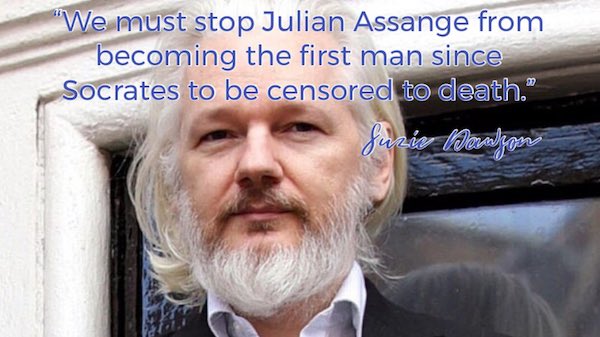

Include the Automatic Earth in your 2020 charity list. Support us on Paypal and Patreon.







